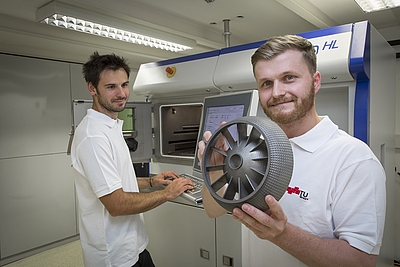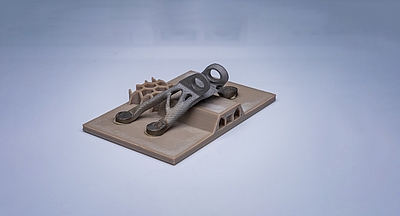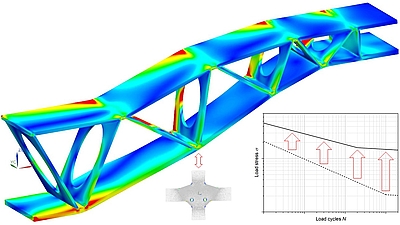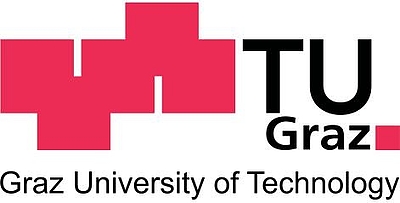
Lightweight materials and technology
28.08.2023
At Graz University of Technology, several research groups focus on the design of metal and hybrid lightweight materials, advanced materials processing and manufacturing, and fatigue design issues. We are frontrunners in the additive manufacturing of metals and composites for ultra-lightweight structures in mobility applications.
The demand for lightweight-driven material combinations, designs or maintenance strategies can be met by modern AM technologies. Based on systematic experiments with a view to optimising the parameters for part properties, integrity and economic aspects, we create solutions using wire arc additive manufacturing technologies. Beyond standard processes like CMT, our research also covers plasma and electron beam based processes.
IMAT – lightweight, high-performance materials
In addition to innovative and novel engineering approaches to producing lightweight, high-performance metal-composites, we also develop hybrid structures with a focus on sustainable materials with improved recyclability that support the circular economy. Examples of these include carbon and glass fibre reinforced thermoplastic composites, which can be combined with lightweight, high-strength metals to reduce aircraft or vehicle weight without compromising passenger safety. The integration of different lightweight materials such as high-strength steels, aluminium alloys and bio-based composites in modern vehicle bodies requires reliable processing technologies, and forming and joining technologies in particular. Proving the general feasibility of such designs requires comprehensive experimental and numerical investigations that are based on the detailed characterisation of the mechanical properties and the failure behavior of the lightweight materials.
IFT – design and production of lightweight parts
The topics of sustainability and optimal material utilisation are becoming increasingly important in the production engineering sector, and, if you consider the entire product lifecycle, lightweight construction has a lot to offer. We need to develop new and adapted production processes and machine tools to achieve the goals of modern lightweight design, all the while increasing flexibility in production. One such tool for designing weight-optimised structures is topology optimisation. Generating lattice structures, for example, opens up completely new possibilities for lightweight construction in application areas such as automotive engineering, aerospace or medicine. Despite the many advantages of additive manufacturing, conventional processes such as milling, turning or grinding continue to play an important role in production engineering for the finishing of precise lightweight structures with optimal surface qualities and geometries to ensure perfect functionality and reduce the energy requirements for production as much as possible. At the AddLab (IFT & IMAT), research is focused on metal-additive manufacturing processes. Along with the production of weight-optimised components using LPBF or the newly developed SLEDM process, research also includes the testing of new material alloys and their economic use in AM.
BST – fatigue design of lightweight structures
Manufacturing processes and other post-treatment methods significantly affect the local material properties and the fatigue life of components exposed to cyclic loads. Investigating such technological effects is fundamental to ensuring safe and reliable fatigue design in modern lightweight structures. Numerical and experimental analysis at the level of representative specimens, and at structural size, facilitates a local assessment and further lightweight optimisation, taking load influences and manufacturing processes, such as welding, casting or additive manufacturing, into account. This, in turn, has enabled the implementation of durable lightweight parts in modern automotive, rail vehicle and aerospace structures.
Graz University of Technology
Kopernikusgsasse 24/I
8010 Graz
+43 316 873 7180
IMAT Institute of Materials Science, Joining and Forming
Univ.-Prof. Dr. Christof Sommitsch
www.imat.tugraz.at
IFT – Institute of Production Engineering
Univ.-Prof. Dr. Franz Haas
www.ift.tugraz.at
BST – Institute of Structural Durability and Railway Technology
Univ.-Prof. Dr. Martin Leitner
www.bst.tugraz.at



